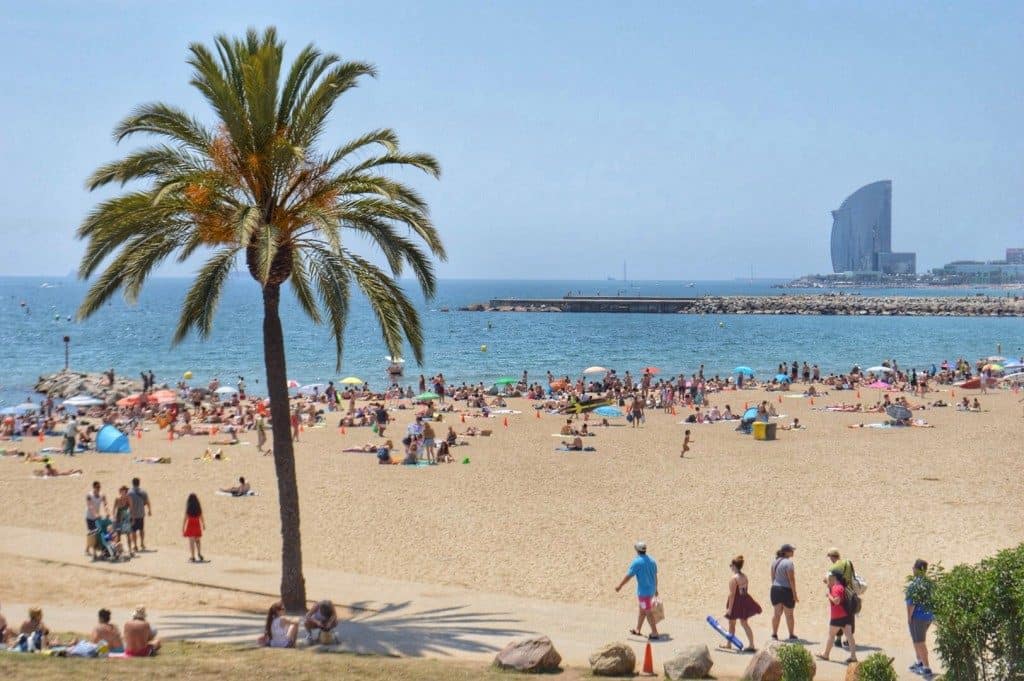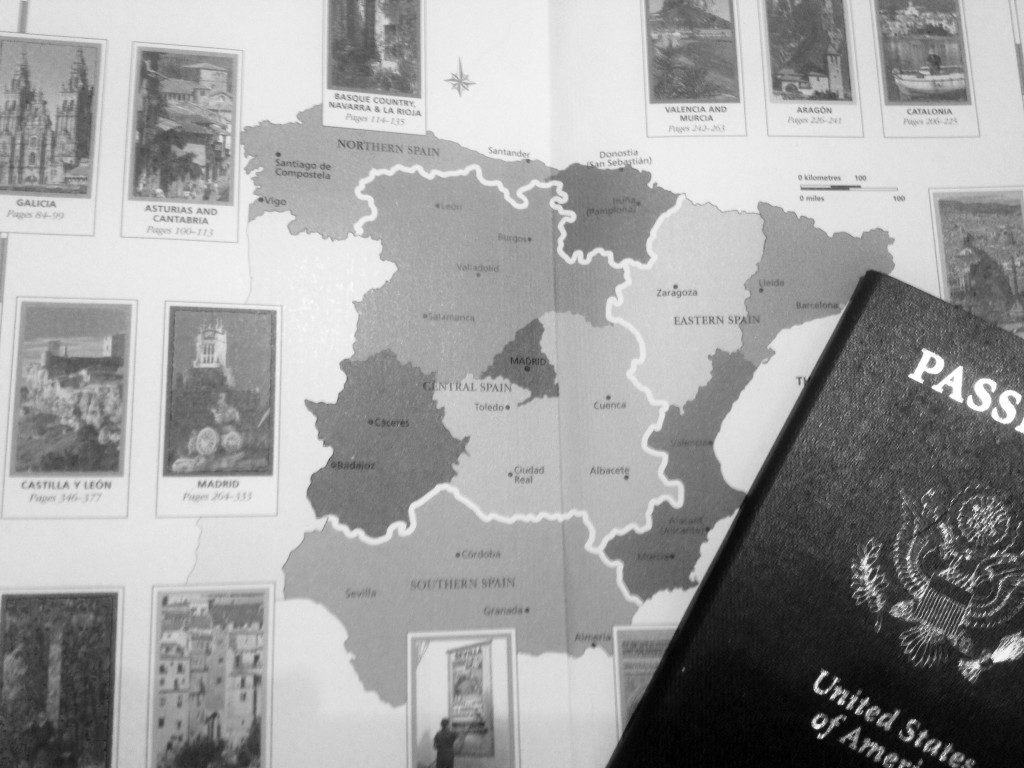Spain is a European destination that many travelers dream of visiting. Incredible Spanish cuisine, scenic coastlines, amazing events and a fascinating history make this southern European country worthy of anyone’s bucket list. To help finalize your dream Spanish vacation, consider these steps in planning your trip to one of Europe’s most relaxing and sunny destinations.
Learn the Spanish basics
The first thing you need to know about Spanish in Spain is that it’s not the only language spoken in the country. In addition to Spanish, Basque, Catalan, and Galician are also some of the more largely spoken languages in specific regions of Spain. However, as Spanish is the official language of the entire country, knowing just some simple basics of it will be enough to get by anywhere. You may already know some of the most general Spanish basics like general greetings and asking how much things cost, but there are a lot things to know about the Spanish spoken in Spain. The most common thing you’ll hear around Spain is “vale” which simply means “okay”. Other useful words and phrases specific to Spain include “no pasa nada” meaning “no problem, “tío/tía” in slang means “guy/dude/man/girl”, and as a foreigner you may often be referred to as “guiri.”
Get around with ease
Budget airlines are a great way to get around in Spain and Vueling is their most popular Spanish budget airline although there are also plenty of RyanAir, EasyJet and Iberia Express flights as well. Simply use your favorite flight search engine to find the cheapest flight. Spain’s railway is also quite developed and a more fun way of getting around. Check out the Renfe website to get around to all the major cities. Note that the AVE is Spain’s high speed train which will get you to your destination faster but at a higher cost. Getting around by bus is also a more affordable option and ALSA is the largest and most popular bus company in Spain.
Choose the best Spanish destination
Barcelona and Ibiza are easily two of Spain’s most visited cities by foreigners, and with good reason. Barcelona is a great city for a mix of beach and city life while Ibiza is all about the beach and party life. But Spain is a very diverse country and has a lot more to offer outside these destinations. For beach seekers, the other Balearic islands of Mallorca and Menorca are great options, especially the island of Formentera. For those that love city life, the capital of Madrid is great option with world renowned art museums and amazing nightlife. Travelers wanting to immerse themselves in traditional Spanish culture will probably enjoy Andalusia in the south the most. The outdoorsy types may want to consider the north of Spain exploring the Pyrenees mountains. No matter what kind of Spanish trip you’re looking for, you’re bound to find the region that best suites you.
Determine if you need a visa
Before you even open up that Lonely Planet guidebook to Spain, you should first determine if you’ll need a visa to visit Spain. Americans and Canadians for example need not apply for one as they get an automatic 90 day tourist visa (within a six month period) upon entering the Schengen zone of Europe of which Spain is apart of. You can check out the website of the nearest Spanish consulate for a list of countries that require visas. Note that processing times will take at least a couple weeks.
Dine on the best food and avoid the worst
One of the most common things travelers to Spain look forward to trying is paella. While it’s incredibly easy to find all around Spain, you may want to think twice before sitting down at the first place that catches your eye. Like any place you travel, it’s best to avoid dining in the most touristic areas as they tend to have some of the worst and overpriced food. A good trick to finding a quality restaurant is to see if they have a menu in English. If so, you may want to reconsider eating there as it’s obviously quite touristy. Restaurants that only have menus in Spanish are a safer bet but come with the added challenge of ordering your food in Spanish. Also note that a dish like paella is actually from the Valencian region of Spain and best ordered when visiting there.
Carefully choose your accommodations
Airbnb has become very popular in Spain and is a great option when looking for accommodations. misterb&b is a little less common, but still an option for gay travelers. However, for a more unique stay you can check out Casas Rurales to find a place to stay outside the city in a rural and more rustic area. Another is staying in a parador which is usually a historic building like a monastery or castle converted into a nice hotel.
Attend one of these annual events
Spain has an innumerable amount of annual events as Spaniards are always looking for reason to get together to socialize and celebrate. Some of the most popular one for all travelers are the running of the bulls, La Tomatina, and Las Fallas in Valencia, However, more LGBT-focused events include many different prides of course. Madrid Pride is the largest gay pride in Europe and an incredible event to attend whether you’re gay or straight. It takes place the first weekend of July and Madrid will be the host of World Pride in 2017 making it even more of a not-to-be-missed event. Circuit is also one of the largest gay events taking place in Spain every year and is held in Barcelona, Ibiza and Maspalomas. Carnival in Sitges, Cadiz and Tenerife are other events that attract thousands of people each year to some of the best spots in Spain.
Decide on the best time to go
Depending on the destination, avoiding the typical travel months of summer may be ideal. Barcelona, for example, can be crazy packed with tourists in the summer making the spring and fall better times to go. However, a destination like Ibiza can be dead outside the summer months which may defeat the purpose if you’re looking to enjoy the beach or club scene. Thanks to Spain’s Mediterranean climate, winter is also a great time to visit many parts of Spain. Southern Spain can be unbearably hot in July and August, but in the winter temperatures don’t really go below a moderate jacket level and it really only snows in parts of the north. The Canary Islands are great to visit year round with their temperatures rarely fluctuating.
Be culturally aware
Educating yourself a bit before your trip to Spain could help you avoid accidentally offending a local and can improve your entire experience overall. As mentioned at the start of this article, know that many regions of Spain have their own historical languages although all speak Spanish. Some regions of Spain like the Basque Country and Catalonia have portions of the population who want independence from Spain so being culturally sensitive to that involves acknowledging locals as Basques or Catalans before Spaniards. Political opinions on independence are strong throughout Spain so tread lightly before engaging in a conversation about it. Note also that while the running of the bulls or Fiesta de San Fermin is very popular for tourists, many Spaniards and activists are against this event and bullfights for its treatment of the animals. Another thing to be aware of is that while things like paella and flamenco are Spanish things, they’re regional and not representative of the nation as a whole. Paella is from the eastern region of Valencia and Flamenco is from the southern region of Andalusia. So keep your eyes and ears open to learning about the things that make whatever region of Spain you visit unique. They’re surely have their own cuisine and traditions that make it special.
Pack the European essentials
When visiting Spain, there are some things to consider that are the same for most Western European countries. For example, don’t make the rookie mistake of forgetting to pack an outlet converter. Wifi is abundant in Spain making the need for cell phone service almost obsolete. However, there are plenty of cell phone providers offering prepaid plans if you want coverage everywhere you go. Big cities like Barcelona and Madrid are very safe, but pickpockets are abundant so keep a keen eye when exploring. Travel insurance is almost always a good purchase to cover for canceled flights, medical emergencies, stolen items or damaged belongings. Lastly, if you’re going to buy things while traveling, be sure to save room for souvenirs in your bag before sitting on your suitcase in order to zip it up. Another option is to have an extra duffle bag handy and ready to be filled up for your return with your plentiful bounty of momentos.









Comment (0)